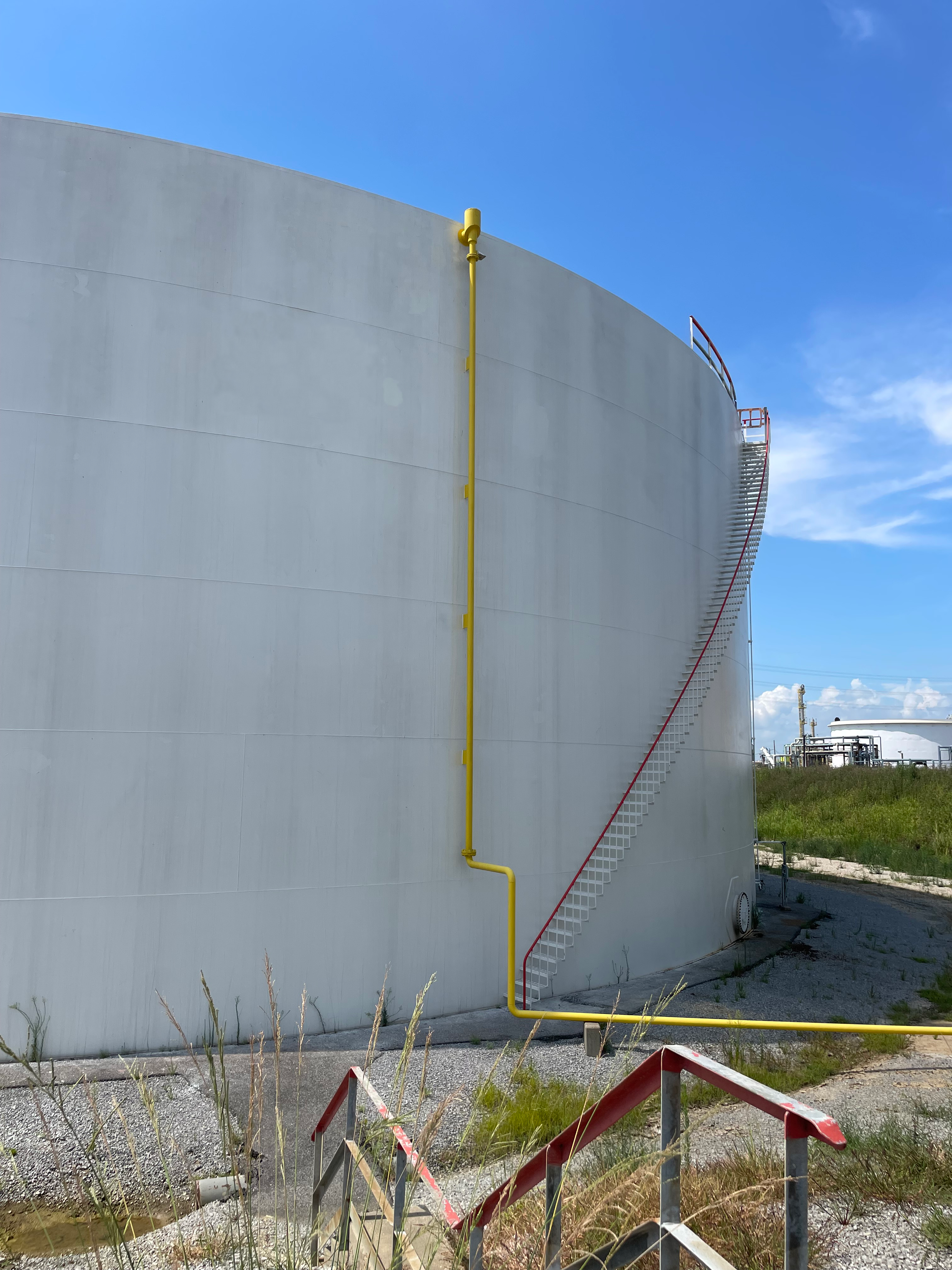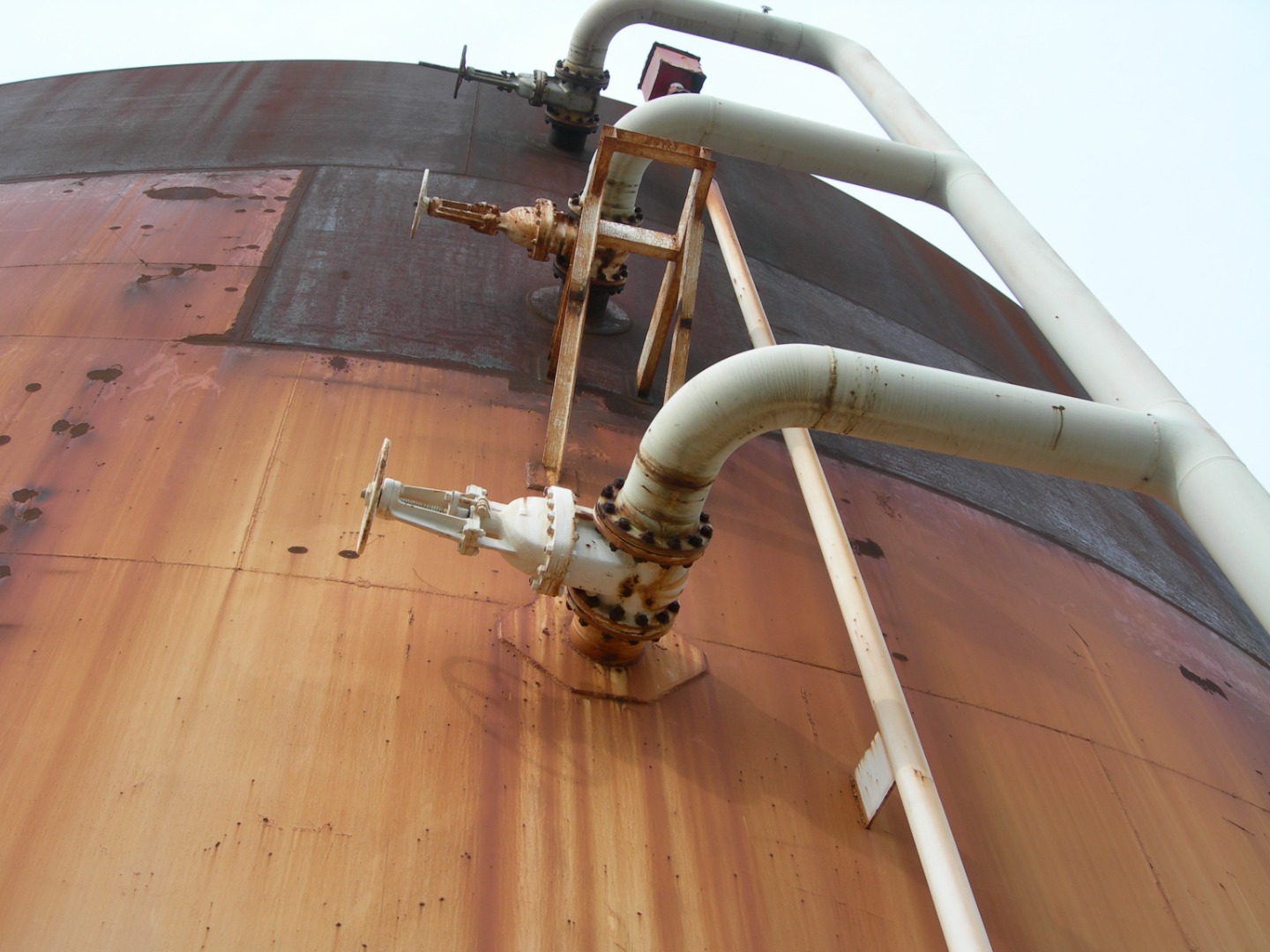Midstream oil and gas facilities operate under precisely calibrated processes.
Those processes are easier to draft on paper, but quite complex to manage in reality.
Storage tank maintenance is one element of that complexity, presenting owners with a difficult conundrum: Tanks last longer, are safer, and generate more revenue when they’re properly maintained.
But proper maintenance requires taking them out of revenue service.

An owner’s ensuing reluctance to go all-in on maintenance is unfortunate but relatable.
But for one refinery, switching to a different tank exterior coating system has turned their tank maintenance tightrope into a walk in the park.
The condition of Tank 99
Tank 99 is one of dozens in a sprawling central Louisiana complex belonging to one of the world’s largest chemical and refining companies.
The 20-year-old cone roof type tank is 80 feet (24.4 meters) in diameter and stands 46 feet (14 meters) high. Maintenance leaders decided a new protective coating maintenance regimen was warranted following an assessment of Tank 99 which revealed:
- • Its cone roof had weathered for two decades, and was never blasted or coated
- • Failures of a previous coating were widespread throughout the tank shell
- • Protective coating application to repaired areas was incomplete

Spot surface prep and touch-ups wouldn’t cut it. It was obvious a full recoat of Tank 99 was necessary. The owner’s incumbent coating manufacturer insisted that the work include blasting the shell and cone roof back to bare steel before installing a new coating system.
The owner wanted to avoid expending the added time and expense of a full blast while still installing a coating system that would extend the tank’s service life for at least another generation. This prompted their investigation of alternative providers.
Carbomastic 15 can sidestep some surface prep
Upon inspecting Tank 99, a Carboline technical service representative saw that the owner could achieve both its asset protection and cost savings objectives at once.
Surface preparation prior to a recoat would be dramatically faster and easier if the owner specified a coating system anchored by Carbomastic 15 instead of the familiar zinc-epoxy-urethane corrosion protection package.
Carbomastic 15 is a unique lamellar aluminum-flake reinforced epoxy mastic developed for marginally prepared surfaces. Its aluminum pigmentation imparts exceptional barrier protection properties even when applied over well-adhered prior finishes or tightly adherent rust.
It also displays excellent wetting properties despite its relatively low solvent content. And with low-stress curing, Carbomastic 15 cures without applying so much tension to an underlying film that it would tear it off the substrate.
A simplified plan for Tank 99 was agreed:
- • Surface prep would consist of SSPC-SP WJ-1 water jetting at 10,000 psi (70 mPa)
- • Application of a primer coat of Carbomastic 15 at 4-6 mils (102-152 µm) DFT
- • A second Carbomastic 15 coat of the same thickness
- • A finish coat of Carbocrylic 3359 DTMC at 2-3 mils (51-76 µm) DFT
Carbocrylic 3359 DTMC is a versatile water-based acrylic finish coat with exceptional weathering characteristics. It can be applied direct-to-metal or over compatible primers and is widely used in tank exterior, piping, and structural steel applications.
Another important characteristic of Carbocrylic 3359 DTMC is its dry-fall characteristics. Dry-fall refers to the dry, easy-to-clean result of a coating that lands on an unintended surface in the event of overspray. A much more abusive process is required to clean wet-falling products, and avoiding this was essential because residential neighborhoods lie immediately adjacent to the refinery.
A similar coating system was specified for adjacent pipe racks, where two coats of Carbomastic 15 were applied followed by one coat of Carbothane 134 HG. Carbothane 134 HG is a high-gloss, thin-film urethane topcoat widely regarded throughout industrial applications for its excellent weathering properties.
This alternative again sidestepped the need for a full blast back to bare steel, and it also resolved a known issue with the incumbent’s topcoat which had difficulty fully curing at thick millages.
An efficient, effective coating program
Tank 99 is one of a total of four tanks for which this new corrosion protection program was specified. And more may follow.
By turning to a system based on Carbomastic 15, the owner has increased tank maintenance efficiency and achieved significant savings in terms of time and cost.
That means longer periods in revenue service as a result, but the positive impacts do not end there.
By shortening maintenance outages and extending storage tank service life, this owner’s operations are made more consistently reliable. In an environment where fragile supply chains are prone to flinch at any little thing, achieving greater stability is a crucial differentiator.

